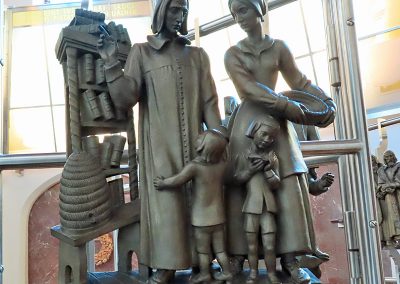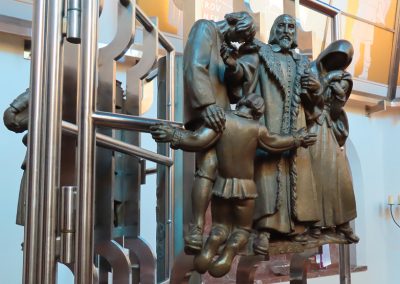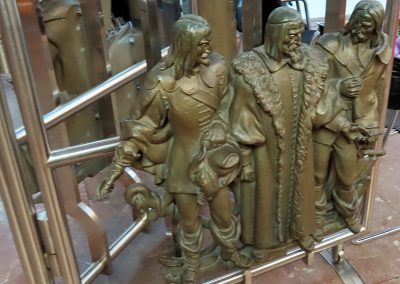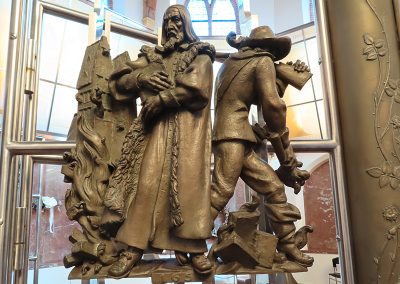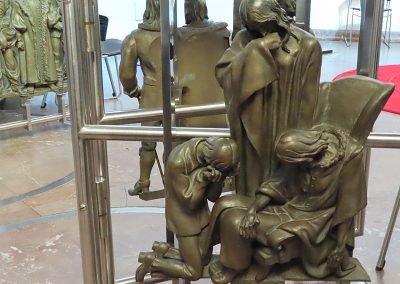Comenius Museum and Mausoleum in Naarden
The Comenius Museum in the city of Naarden is dedicated to the life and work of the Czech Jan Ámos Komenský also known as Comenius (1592-1670), philosopher, theologian and pedagogue who spent the last fourteen years of his life in Amsterdam. He was buried in Naarden in the Walloon chapel, now the Comenius Mausoleum.
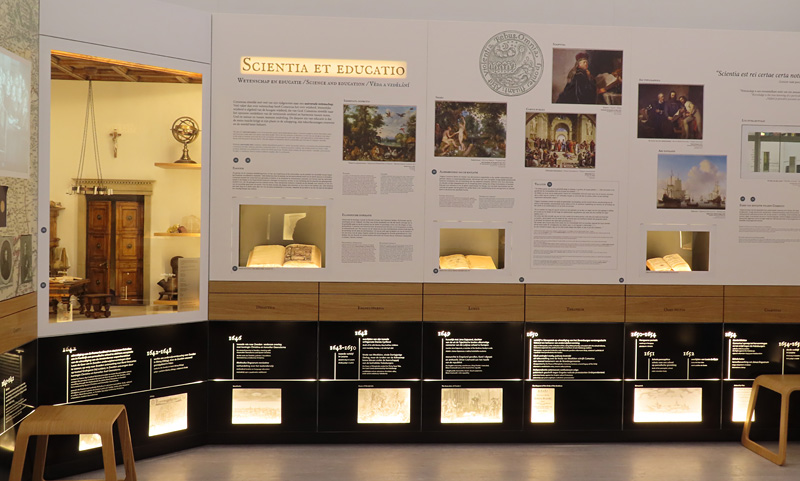
Comenius Museum: Permanent Exhibition Mundus Comenii
Mundus Comenii, the world of Comenius, is the permanent exhibition in the museum and covers four themes: religion, science, education and politics. Eight panels tell the story of the life of Comenius who is considered the father of modern education. He was an advocate of education for both boys and girls. The exhibition is interactive. Texts, images and sound provide an overview of the life and achievements of Comenius. The museum regularly organizes temporary exhibitions with themes related to Comenius. The captions and audio tour of the exhibition are in Dutch, English and Czech.
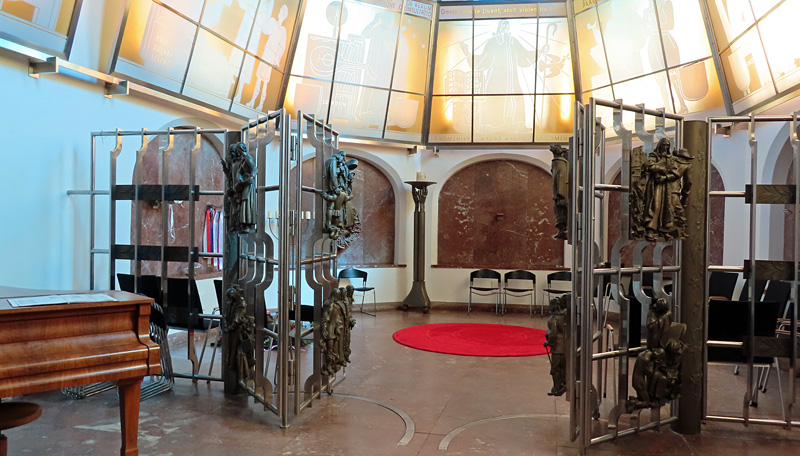
Mausoleum
Next to the museum is the mausoleum with the grave of Comenius in the chapel of a former monastery. The inauguration of the mausoleum took place in 1937. The chapel is decorated with glass panels, a choir screen with sculptures showing the different stages of Comenius’ life made by Czech artists. Every year, on March 28, Comenius’ birthday, a wreath is laid at his grave.
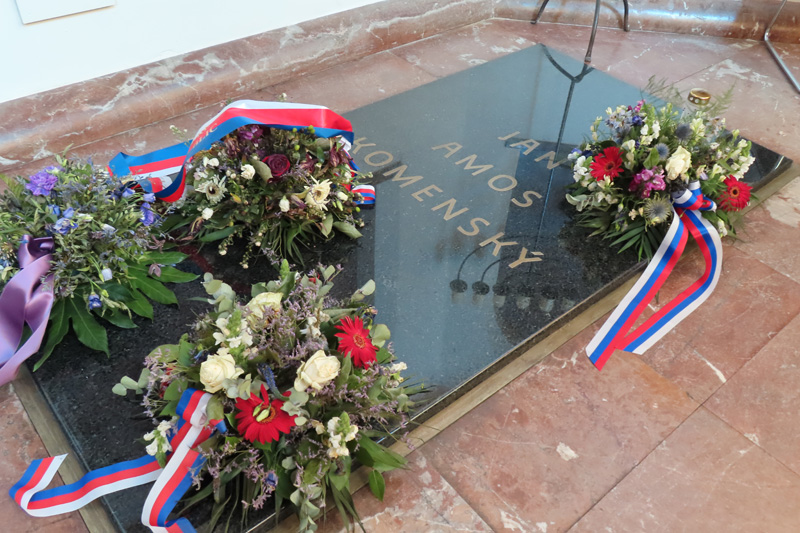
The City of Naarden as a Place of Pilgrimage
The Czechs greatly appreciate the fact that this mausoleum was erected for Comenius. All Czechs know Naarden because the Czech 200 CKZ banknote shows the outline of the city. Comenius’ image is on the reverse.
Comenius was buried in Naarden in 1670. When Bohemia finally became independent in the early 20th century, he was honoured as a national hero and his grave became an important place of pilgrimage for Czechs. During the communist regime, many went on pilgrimage to Naarden because his grave was a symbol of hope. After the Velvet Revolution of 1989, among the first to lay a wreath at his grave were Alexander Dubček, member of the Communist Party and political leader of Czechoslovakia, and Václav Havel, the first president of a free Czechoslovakia.
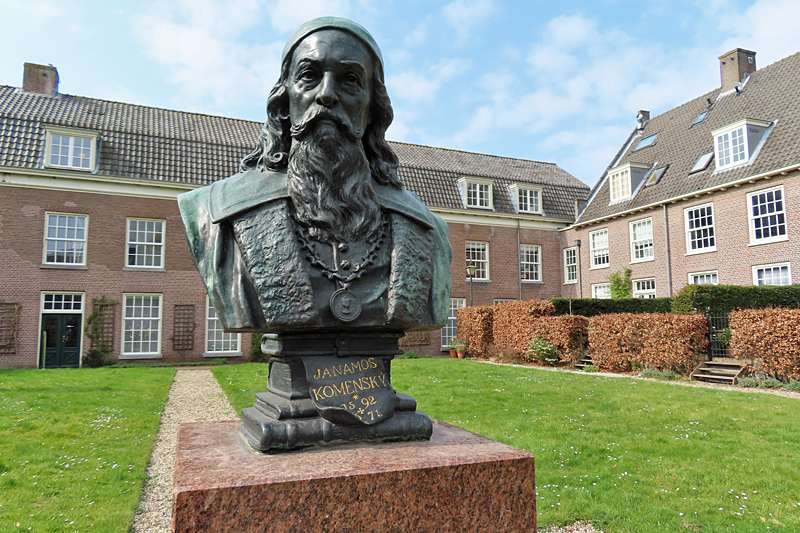
Who is Comenius
Comenius lived most of his life in exile, fleeing political and religious persecution in Europe. From 1656, the last fourteen years of his life, he lived in Amsterdam where he hoped to realize his project for the betterment of humanity.
Comenius, also known as Komenský, was the bishop of a Protestant church, the Bohemian Brethren, whose members had been forced into exile when the Hapsburgs imposed Catholicism on Bohemia. The Brothers were Calvinists and had many contacts with the Dutch Calvinist churches.
However, in Dutch society Comenius was better known as an author of language teaching books. His book Orbis Sensualium Pictus, The Visible World in Pictures, was one of the first to use pictures to teach the native language, education in those days was in Latin. This was revolutionary at the time, as was his idea that all children, of both sexes and of all social classes, should be educated.
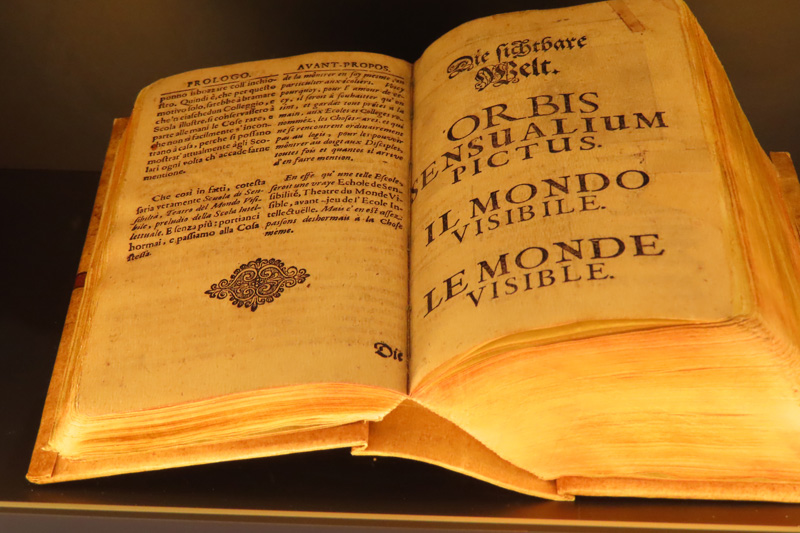
According to Comenius, education served a higher purpose: to achieve global peace, humanity had to be re-educated. From the canal house, Het Huis met de Drie Hoofden, Keizersgracht 123 in Amsterdam, he started compiling and rewriting his pedagogical works, with the support of the Amsterdam city council, who allowed him to use the city library.
Comenius had lost his personal library and many precious manuscripts in a fire before fleeing his previous exile in Poland. In Amsterdam, he found the peace and time to work on what would become his lasting contribution to both philosophy and pedagogy.
From 1656, Comenius lived in Amsterdam, where 43 volumes of his works appeared in print, approximately half of his total oeuvre. He died 14 years later, after a long illness, on 15 November 1670, and was buried in Naarden.
Location and opening hours
The Comenius Museum and Mausoleum is located in the fortified town of Naarden, 23 km south-east of Amsterdam, via the A1 and A10 or by train.
Address: Comenius Museum, Kloosterstraat 33, Naarden
Opening hours: Tuesday to Sunday 12:00 noon to 5:00 p.m. (November 1 – March 1 to 4:00 p.m.)
RELATED ARTICLES:
1. Comenius Museum in Prague.
The Comenius Museum gives an overview is given of the most important developments in education in the Czech Republic. You will see, among other things, two classrooms. One shows a room during the First Czechoslovak Republic (1918-1938). The second classroom is from the socialist period (1948-1989). Typical are the maps and wall charts, green or black folding blackboard.
2. Erasmus and Comenius in Prague
A bronze front door depicting Erasmus and Comenius
Next article: Day Trip to Delft and how Delftware is made
Previous article: Best Bridges,Canals and Singels in Amsterdam
photos Marianne Crone

